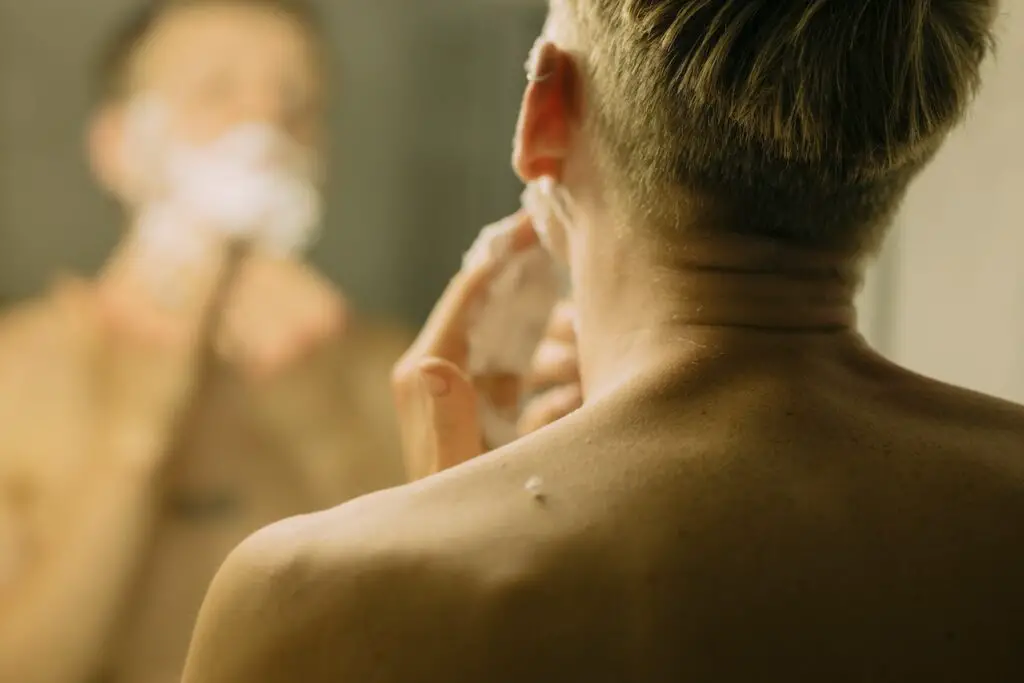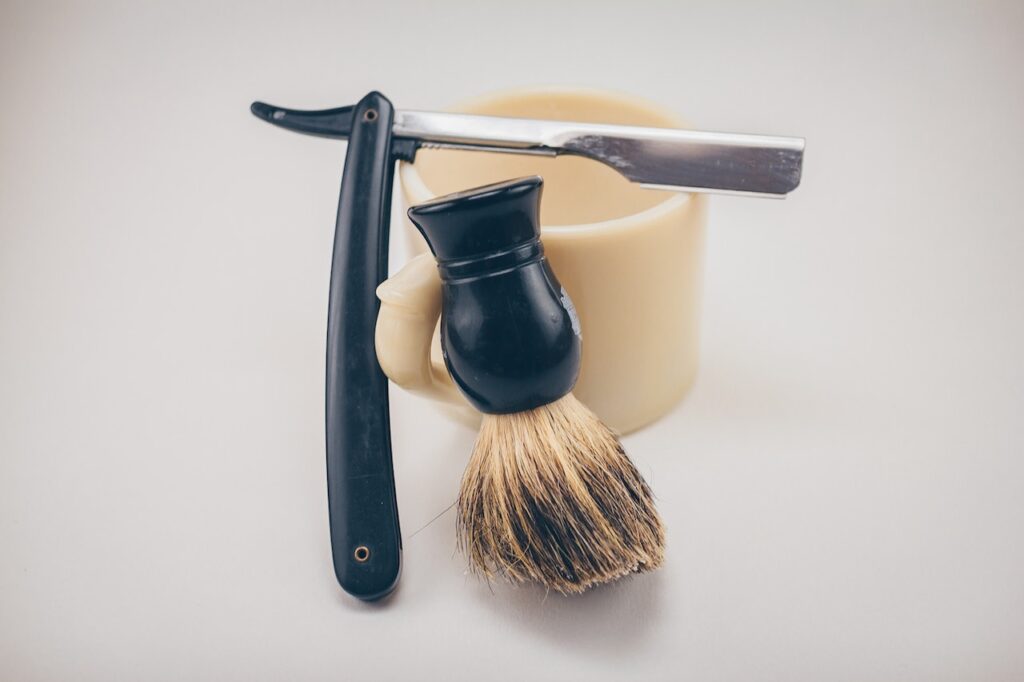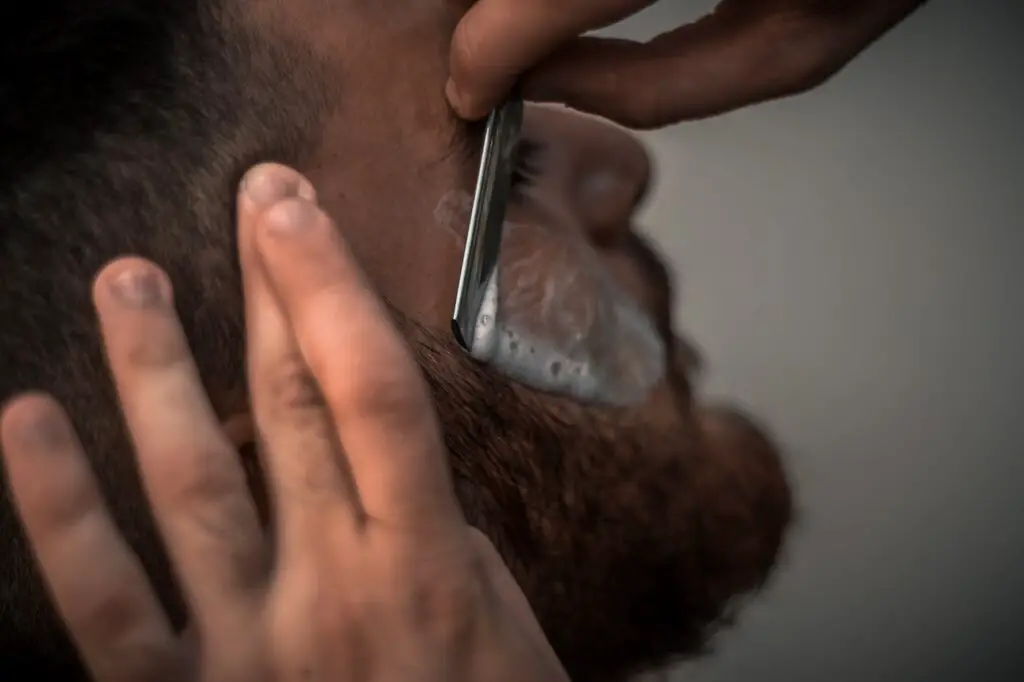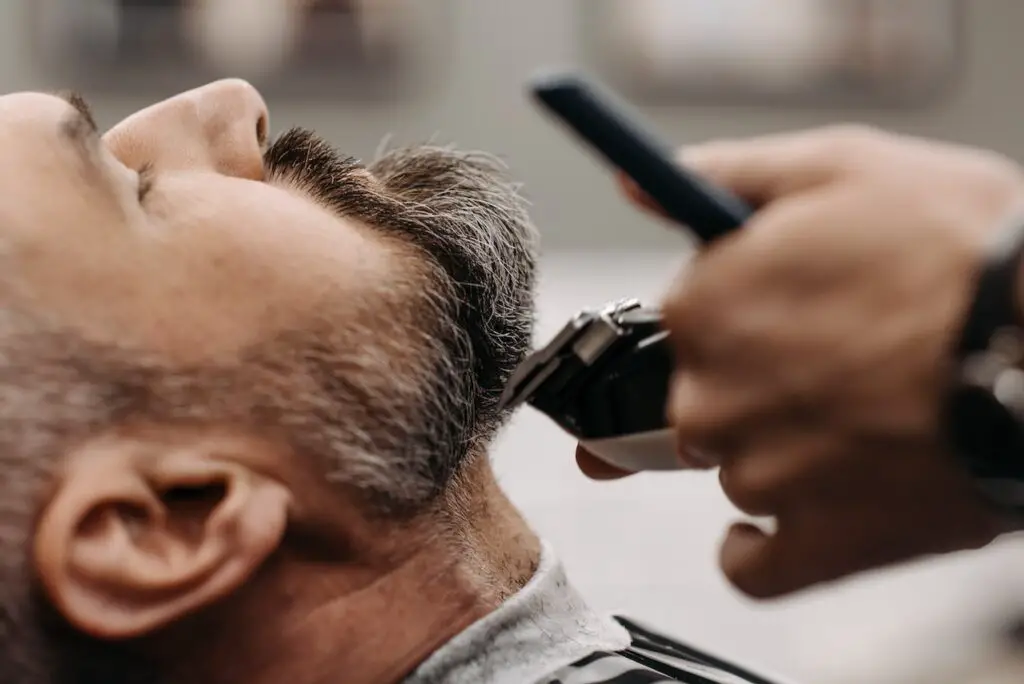Having a smooth, close shave is an essential part of men’s grooming routine. A well-groomed appearance not only boosts confidence but also contributes to overall hygiene. This article will provide you with valuable tips and tricks to achieve a smooth and comfortable shave, ensuring a flawless finish.
Preparing for the Shave
Before diving into the shaving process, it is crucial to prepare your skin adequately. This step will minimize irritation and enhance the overall shaving experience.
Cleansing the Skin
Cleansing the skin is a vital step in preparing for a smooth, close shave. By cleansing your face with a mild facial cleanser or face wash, you effectively remove dirt, excess oil, and dead skin cells that can clog your razor. This initial cleansing process creates a clean canvas for shaving, ensuring optimal results. Gently massaging the cleanser onto your face in circular motions helps stimulate blood circulation and promotes a healthier complexion. Remember to rinse thoroughly with warm water to remove any residue before proceeding to the next steps.
Related: How to Achieve a Perfect Shave: Tips and Tricks for Men
Exfoliating
Exfoliating is a crucial part of your shaving routine that should not be overlooked. By using a gentle exfoliating scrub, you can effectively remove impurities and dead skin cells that can cause razor clogs and lead to an uneven shave. The exfoliation process helps to unclog pores and smoothen the skin’s texture, creating a clean and fresh surface for shaving. By exfoliating regularly, you can also minimize the occurrence of ingrown hairs and achieve a closer shave. Be sure to use a scrub specifically designed for the face and gently massage it onto your skin in circular motions. Rinse thoroughly with warm water to reveal a smoother and revitalized complexion, ready for the next steps in your shaving routine.
Softening the Facial Hair
Softening the facial hair is a crucial step in achieving a smooth and comfortable shave. There are a few methods you can employ to soften the hair follicles before shaving. One effective technique is to take a warm shower prior to shaving. The steam and warm water help to open up the hair follicles, making the hairs more pliable and easier to cut. Another option is to apply a warm towel to your face for a few minutes. This helps to soften the facial hair and prepare it for shaving. Softening the hair minimizes tugging and pulling during the shaving process, reducing the chances of irritation and ensuring a closer shave.

Related: The Best Men’s Grooming Products for Blackheads
Choosing the Right Shaving Products
Using the right shaving products can make a significant difference in your shaving experience. Here are some essential products to consider:
Shaving Cream or Gel
Choosing the right shaving cream or gel is essential for a smooth and comfortable shaving experience. These products provide lubrication, protect the skin, and help the razor glide smoothly across the face. Opt for a high-quality shaving cream or gel that suits your skin type. Look for ingredients like aloe vera or glycerin, which moisturize and soothe the skin.
Additionally, consider products that are free from harsh chemicals and artificial fragrances to minimize the risk of irritation. Applying a generous amount of shaving cream or gel creates a protective barrier, allowing the razor to effortlessly remove the hair without causing discomfort or redness. Experiment with different formulas until you find one that works best for you and leaves your skin feeling nourished and refreshed.
Shaving Brush
Using a shaving brush can greatly enhance your shaving routine. A shaving brush is a valuable tool that helps create a rich lather and evenly distribute shaving cream or gel onto your face. It also helps lift the hairs, allowing for a closer shave. When selecting a shaving brush, choose one with soft, natural bristles that are gentle on the skin. Synthetic brushes are also available and offer excellent performance.
To use a shaving brush, wet it with warm water and swirl it in a shaving cream or gel to create a thick lather. Apply the lather to your face using gentle, circular motions, ensuring that it covers the entire shaving area. The brush’s bristles help exfoliate the skin, remove dead cells, and further soften the facial hair. By incorporating a shaving brush into your routine, you can elevate your shaving experience and achieve a smoother, more comfortable shave.

Related: 10 Essential Men’s Skincare Tips for Clear, Healthy Skin
Razor Selection
Choosing the right razor is crucial for a smooth and precise shave. There are various options available, each with its own advantages. Safety razors are a popular choice as they offer a close shave and allow for blade replacement, reducing waste. Cartridge razors provide convenience with multiple blades and pivoting heads that adapt to the contours of your face.
Electric razors offer flexibility and are suitable for quick touch-ups. Consider your preferences and skin sensitivity when selecting a razor. Ensure the razor is sharp and in good condition to prevent tugging or pulling of the hair. Experiment with different razors to find the one that provides the best results for your skin and shaving needs.
Mastering the Shaving Technique
Now that you are prepared and have the right shaving products, let’s delve into the shaving technique itself. Follow these steps to achieve a smooth, close shave:
Wetting the Face
Wetting the face before shaving is a crucial step that shouldn’t be skipped. By splashing warm water onto your face, you hydrate the skin and soften the facial hair, making it easier to cut. Wetting the face also helps to open up the pores, allowing for a smoother and more comfortable shaving experience. The warm water also helps to relax the facial muscles, reducing the chances of accidental nicks or cuts. Taking a moment to wet your face prepares it for the upcoming shaving process, ensuring optimal results.
Applying Shaving Cream
Applying shaving cream is an essential step in your shaving routine. After wetting your face, take a dollop of shaving cream and spread it evenly across your beard area. The shaving cream acts as a protective barrier, allowing the razor to glide smoothly over the skin. It also helps to moisturize and soften the facial hair, making it easier to cut. Gently massage the shaving cream into your skin using circular motions to ensure complete coverage. The cream creates a rich lather that further enhances lubrication and reduces friction during shaving. By taking the time to apply shaving cream, you create the ideal surface for a close and comfortable shave.
Shaving with the Grain
Shaving with the grain is a key technique to achieve a smooth and irritation-free shave. It involves following the direction in which your facial hair naturally grows. By shaving with the grain, you minimize the risk of tugging, pulling, and ingrown hairs. The razor glides smoothly along the hair shaft, cutting it cleanly at the surface of the skin. This technique helps to maintain the natural alignment of the hair follicles and reduces the likelihood of skin irritation and razor burn. While shaving against the grain may provide a closer shave, it increases the risk of irritation and should be approached with caution. By prioritizing shaving with the grain, you can achieve a comfortable and effective shave while minimizing potential skin issues.
Rinse and Repeat
After each stroke, rinse the razor blade to remove excess hair and shaving cream. This will prevent clogging and ensure a smooth shave. Repeat the process until you have shaved the entire area.

Related: The 11 Best Barber Shops in London: A Comprehensive Guide
Shaving Against the Grain (Optional)
Shaving against the grain is an optional technique that can be used for an even closer shave. It involves shaving in the opposite direction of hair growth. This method cuts the hair as short as possible, resulting in a smoother appearance. However, it’s important to note that shaving against the grain can increase the risk of irritation, razor bumps, and ingrown hairs. If you choose to shave against the grain, do so with caution and use light pressure to minimize the potential for skin irritation. It’s advisable to first master shaving with the grain before attempting this technique. Consider your skin sensitivity and hair type when deciding whether to incorporate shaving against the grain into your routine.
Aftercare for a Smooth Finish
Completing the shaving process doesn’t mean your routine is over. Proper aftercare is essential for maintaining a smooth and irritation-free finish.
Rinsing and Patting Dry
After shaving, rinse your face with cool water to remove any remaining shaving cream. Gently pat your face dry with a clean towel, avoiding rubbing, as this can cause irritation.
Applying Aftershave
Apply a soothing aftershave product to calm and hydrate your skin. Look for alcohol-free options that provide moisture and help soothe any irritation caused by shaving.
Moisturizing
Finish your shaving routine by applying a moisturizer or post-shave balm. This step helps replenish moisture and keeps your skin healthy and nourished.

Troubleshooting Common Shaving Issues
Even with the best techniques and products, some common shaving issues may still arise. Here are a few troubleshooting tips:
Razor Burn
Razor burn is a common issue that can occur during shaving, causing discomfort and redness on the skin. It occurs when the razor blade irritates the skin, leading to inflammation. To alleviate razor burn, apply a cold compress or aloe vera gel to soothe the affected area. Avoid shaving until the irritation subsides, allowing the skin to heal. Consider using a milder shaving cream or gel, as harsh ingredients can exacerbate razor burn. Additionally, ensure that your razor blade is sharp and clean to minimize friction and irritation. Taking these steps can help alleviate razor burn and promote a more comfortable shaving experience.
Related: How to Prevent Razor Burn: Men’s Shaving Tips and Tricks
Ingrown Hairs
Ingrown hairs can be a frustrating side effect of shaving. They occur when a hair grows back into the skin instead of upward, leading to redness, inflammation, and potential pain. To prevent ingrown hairs, it is essential to exfoliate regularly to remove dead skin cells and unclog pores. Using a sharp razor can also help as it cuts the hair cleanly without pulling or tugging. If you notice an ingrown hair, gently exfoliate the area to help release the trapped hair. Use sterilized tweezers to carefully remove the hair, taking care not to damage the surrounding skin. Applying a warm compress or an over-the-counter ingrown hair solution can help soothe the affected area and promote healing.
Nicks and Cuts
Nicks and cuts can occasionally happen while shaving, especially if you rush through the process or use improper technique. If you experience a minor nick or cut, apply gentle pressure with a clean tissue to stop the bleeding. Avoid touching the area with dirty hands to prevent infection. Consider using a styptic pencil or alum block, which contain antihemorrhagic agents that can help seal the cut and promote faster healing. If the cut is deep or continues to bleed, seek medical attention.
Related: How to Get Rid of Ingrown Hairs: Men’s Shaving Tips and Tricks
Irritation and Redness
Irritation and redness are common concerns that can occur after shaving, particularly for those with sensitive skin. To reduce irritation and redness, it’s important to prep your skin properly before shaving and choose gentle products. Ensure your razor is clean and sharp to minimize friction. After shaving, rinse your face with cool water to soothe the skin and close the pores. Applying a soothing aftershave product, such as one containing aloe vera or witch hazel, can help calm irritation and reduce redness. Avoid products with harsh chemicals or alcohol, as they can exacerbate the issue. If irritation persists, consider consulting a dermatologist for further guidance.
Conclusion of this article
Achieving a smooth, close shave is possible with the right techniques and products. By preparing your skin, choosing the appropriate shaving products, mastering the shaving technique, and following proper aftercare, you can enjoy a comfortable and flawless shaving experience. Remember to prioritize your skin’s health and adjust your routine as needed to achieve optimal results.
FAQs
How often should I replace my razor blades?
It is recommended to replace razor blades every 5 to 7 shaves or when you notice signs of dullness or discomfort during shaving.
Should I shave before or after taking a shower?
Shaving after taking a warm shower or using a warm towel on your face helps soften the facial hair and open up the pores, making shaving easier and more comfortable.
Can I use an electric razor for a close shave?
Electric razors can provide a close shave, especially high-quality ones with multiple cutting elements. However, they may not offer the same level of closeness as traditional razors.
How can I prevent razor bumps?
To prevent razor bumps, exfoliate regularly, shave with the grain, use a sharp razor, and apply a soothing aftershave product.
Is it necessary to use a shaving brush?
While a shaving brush is not essential, it can help create a rich lather, lift the hairs, and provide a more comfortable shaving experience.

